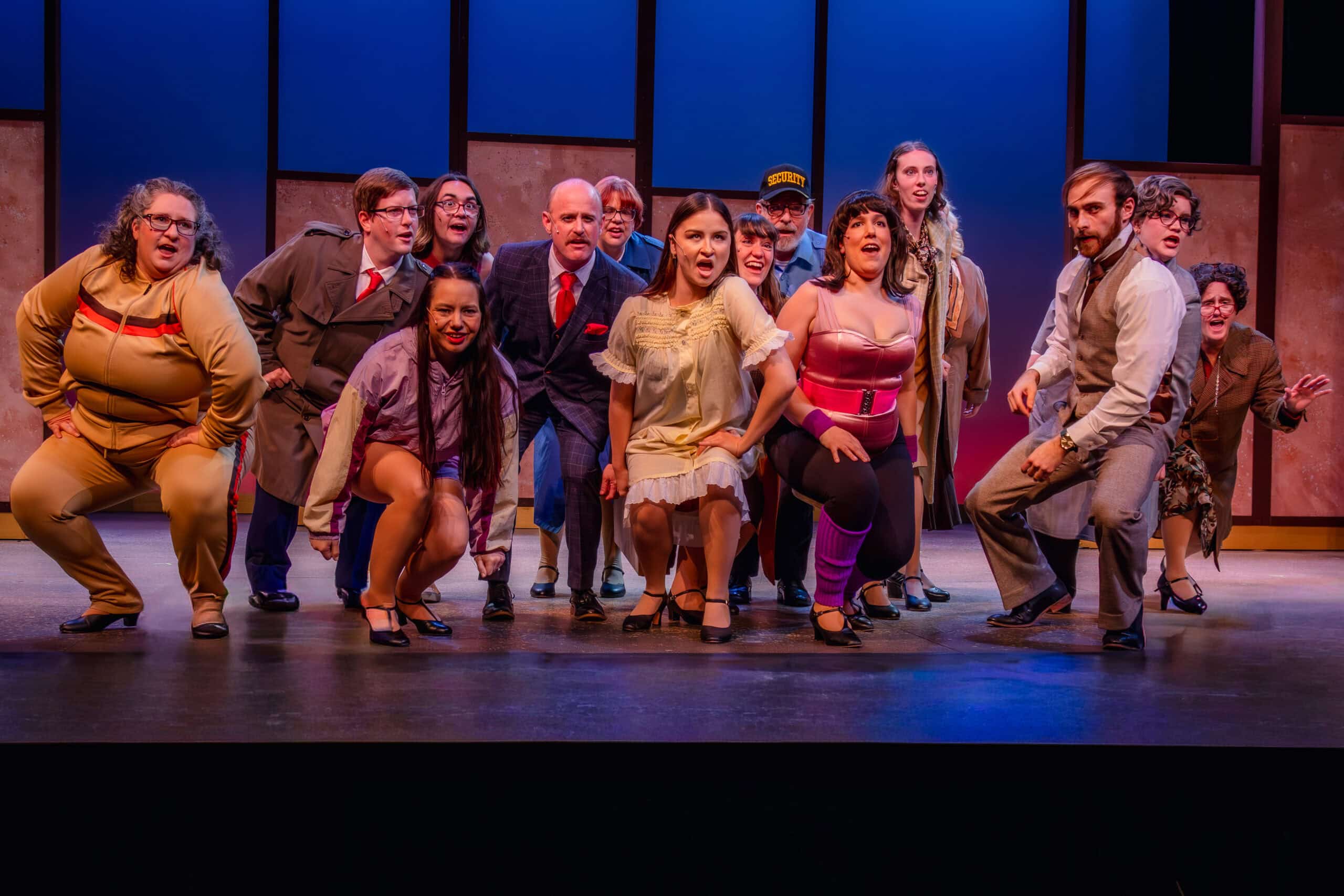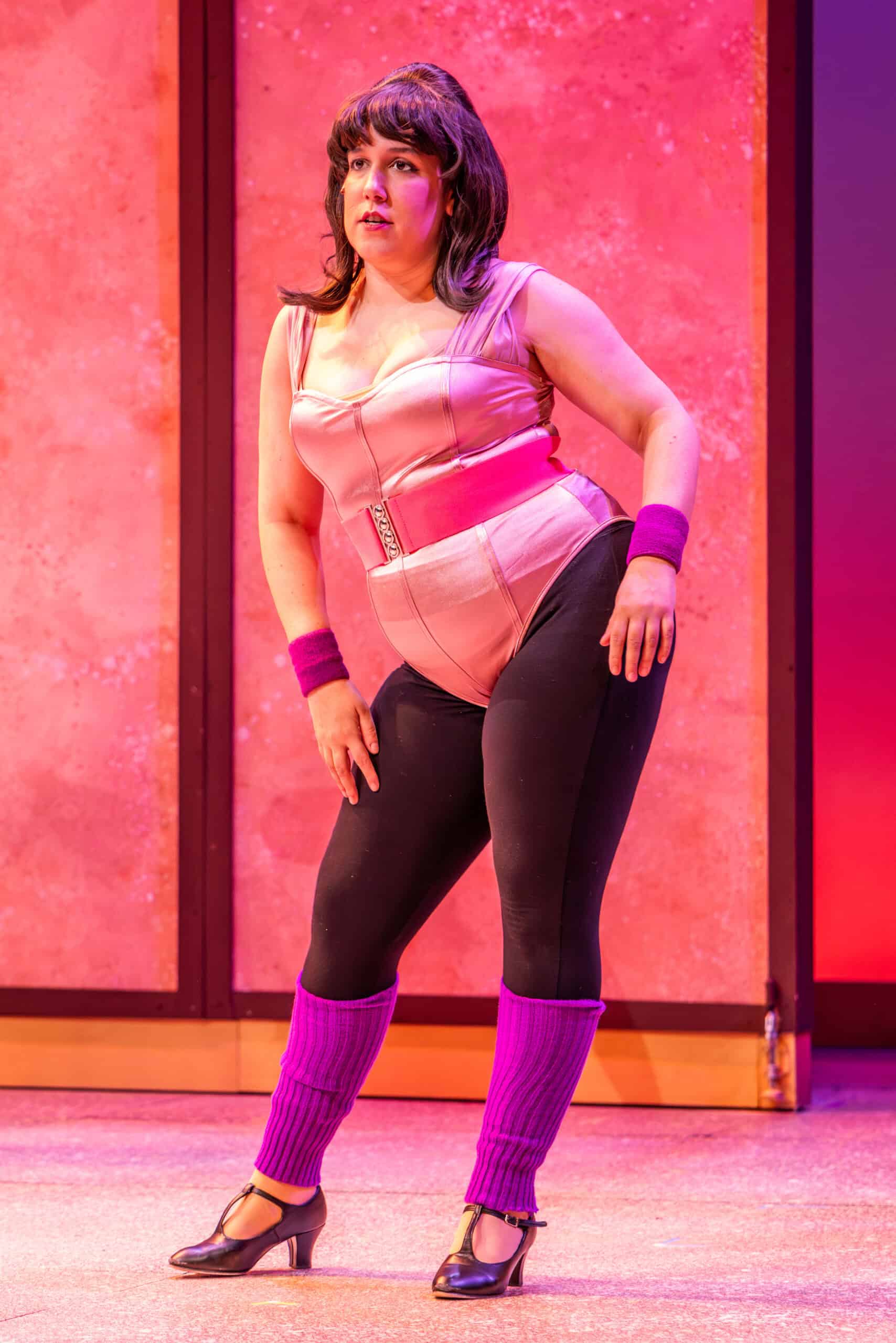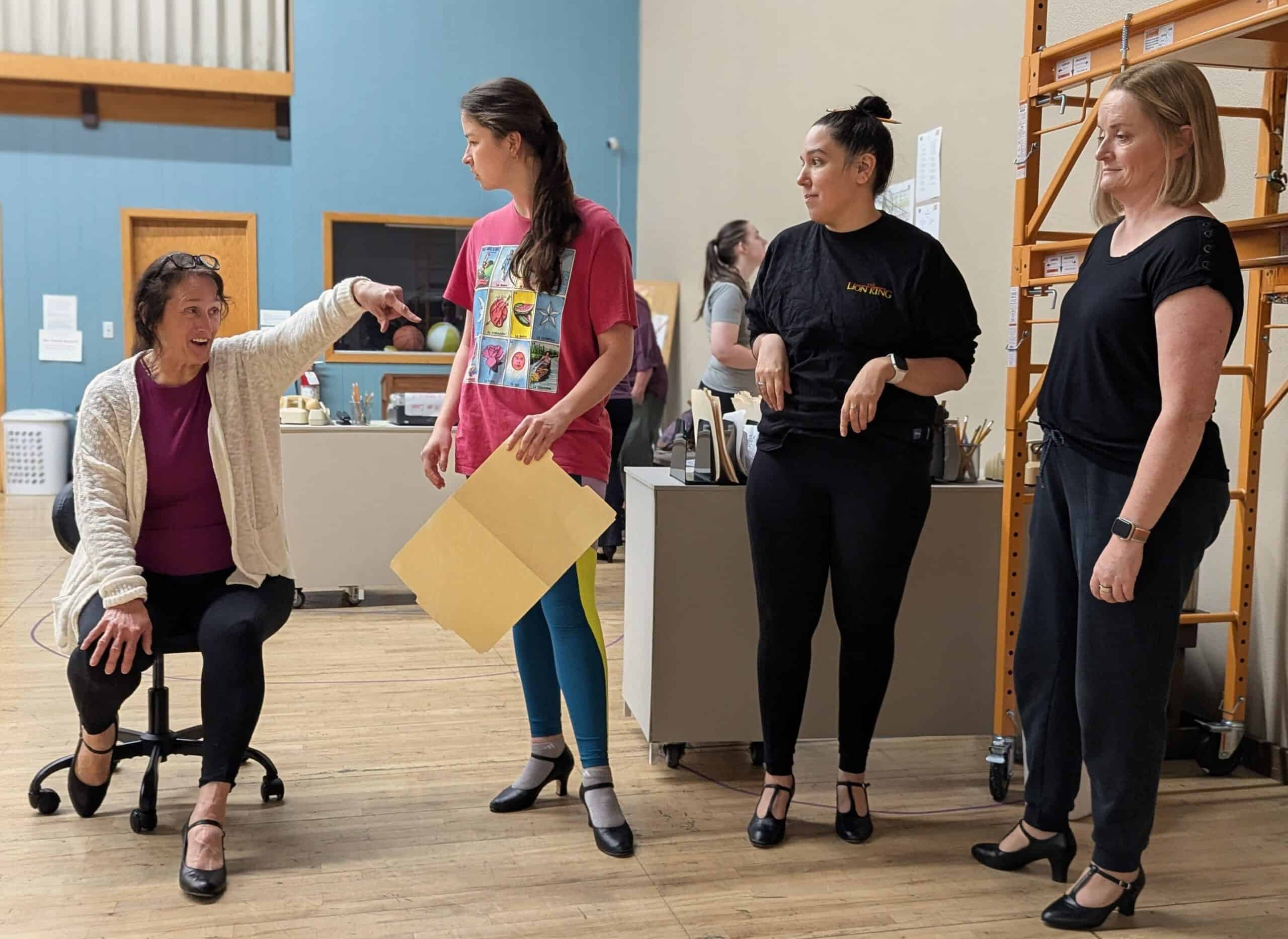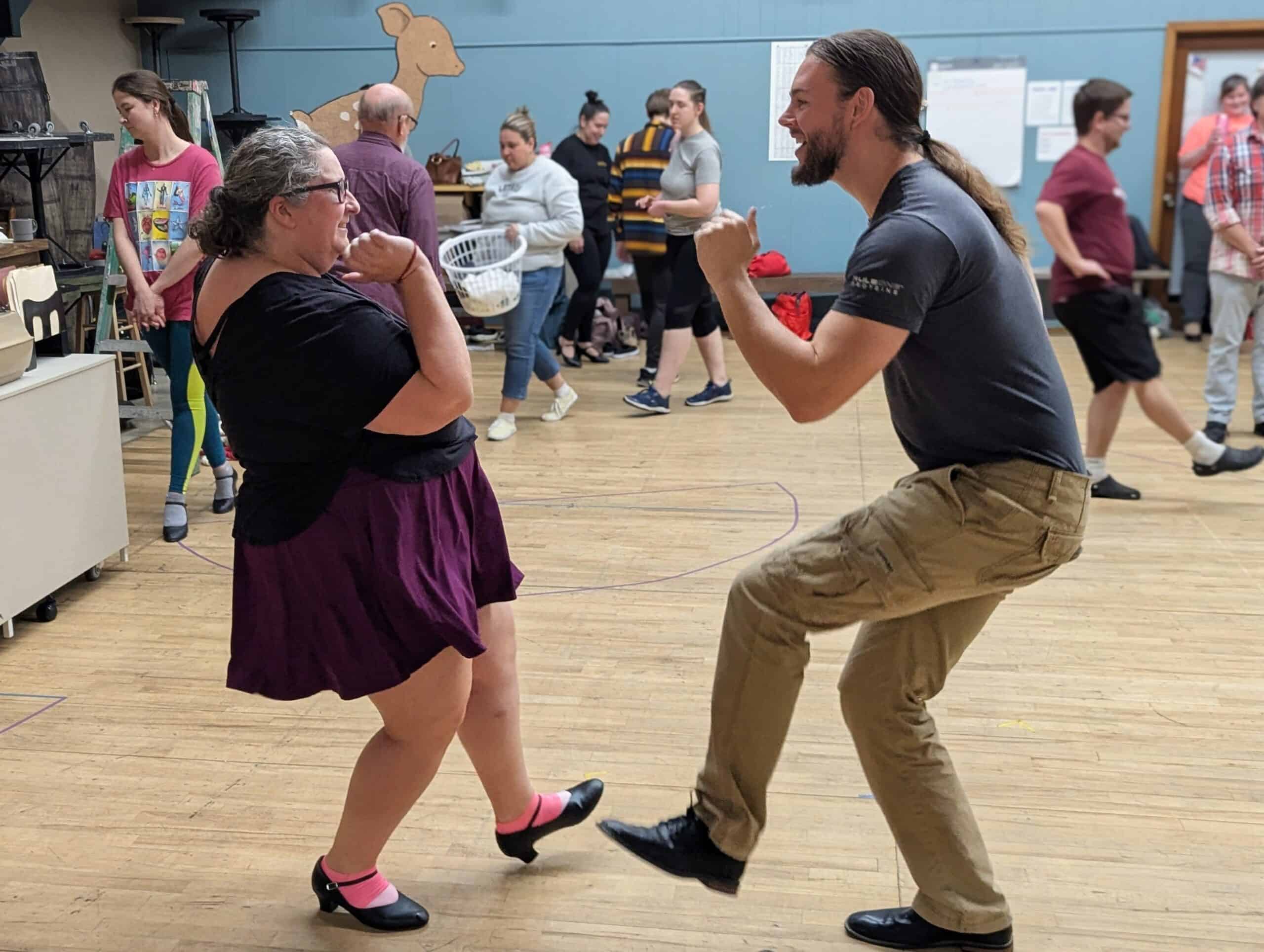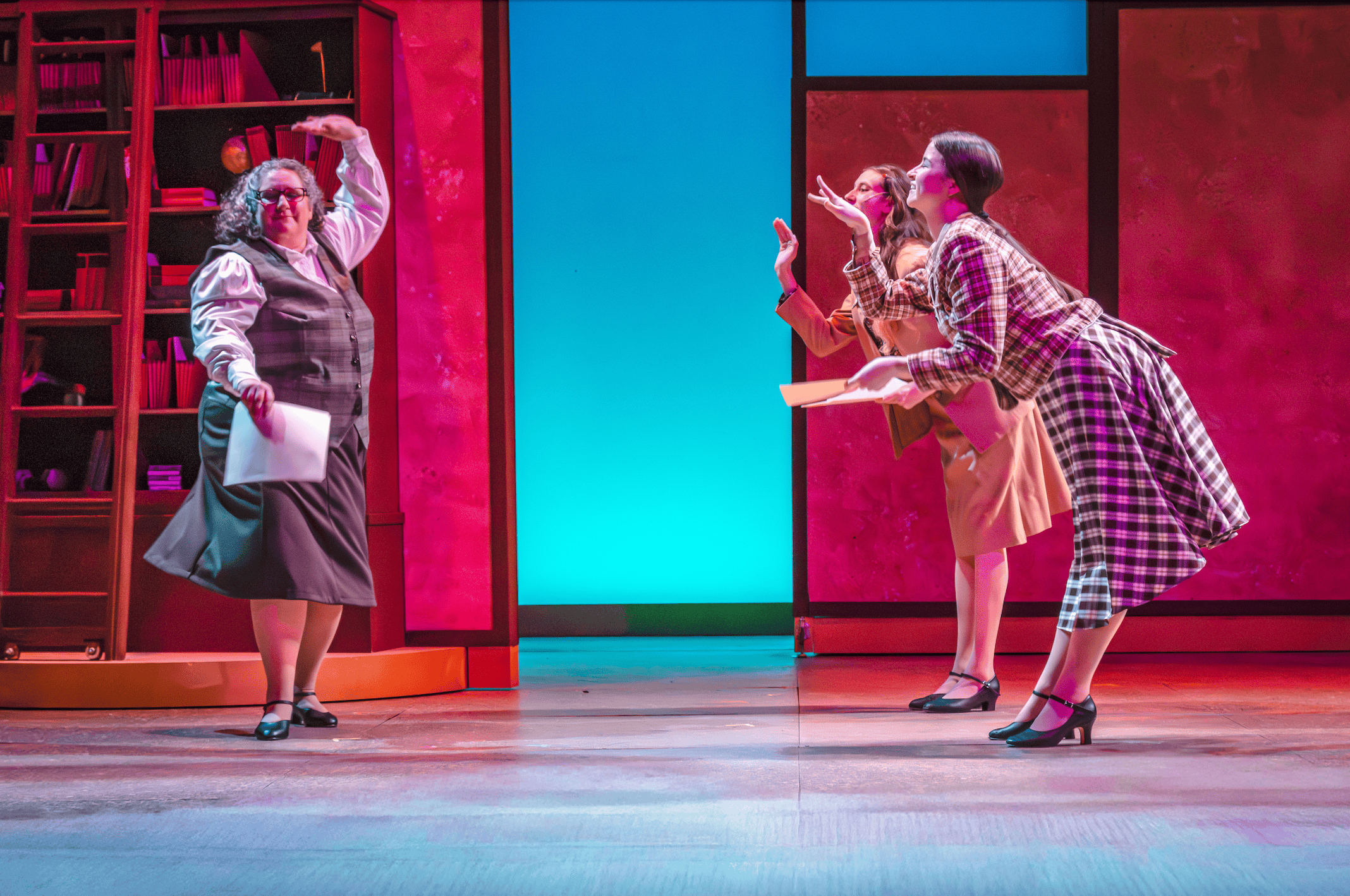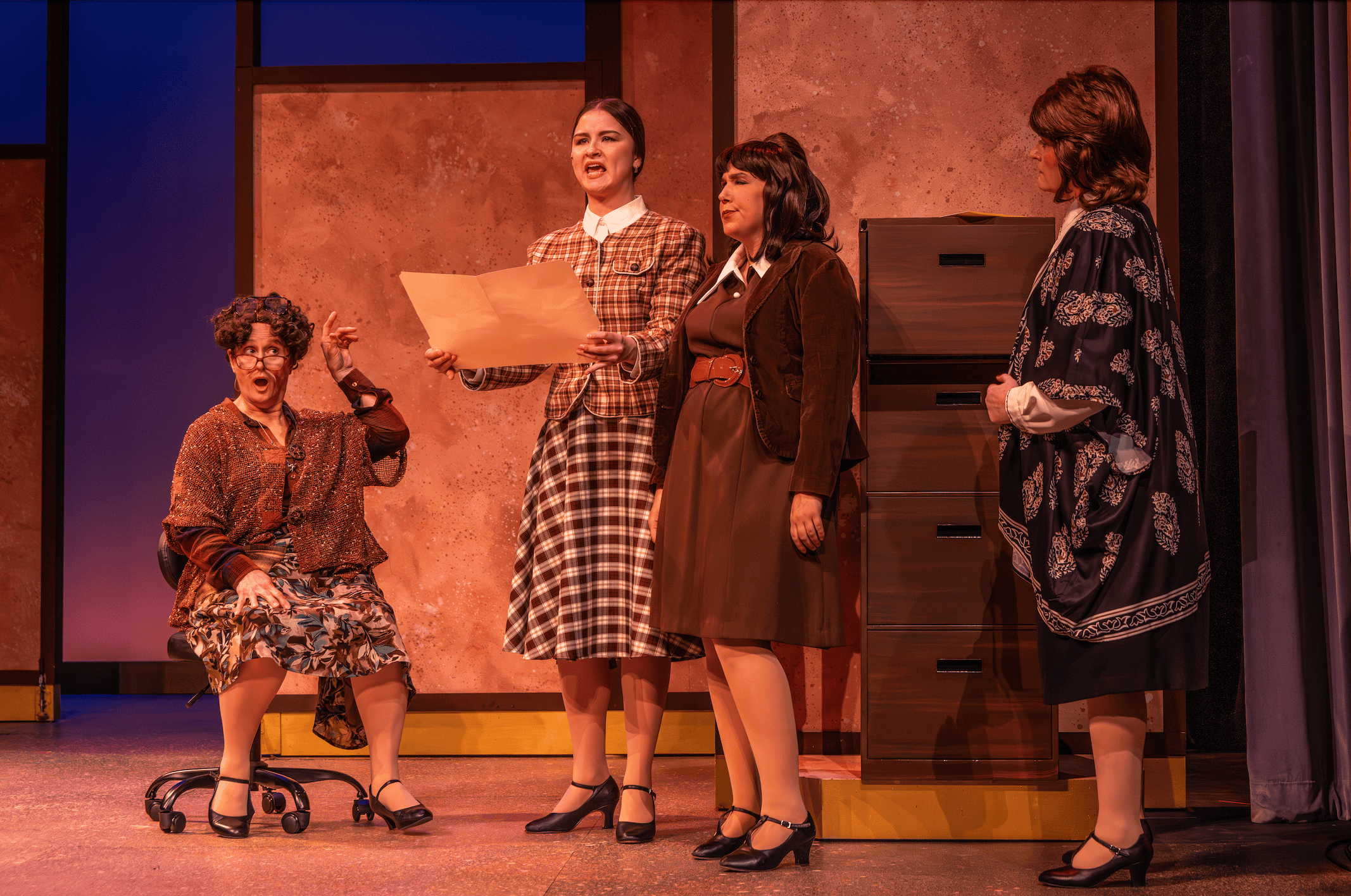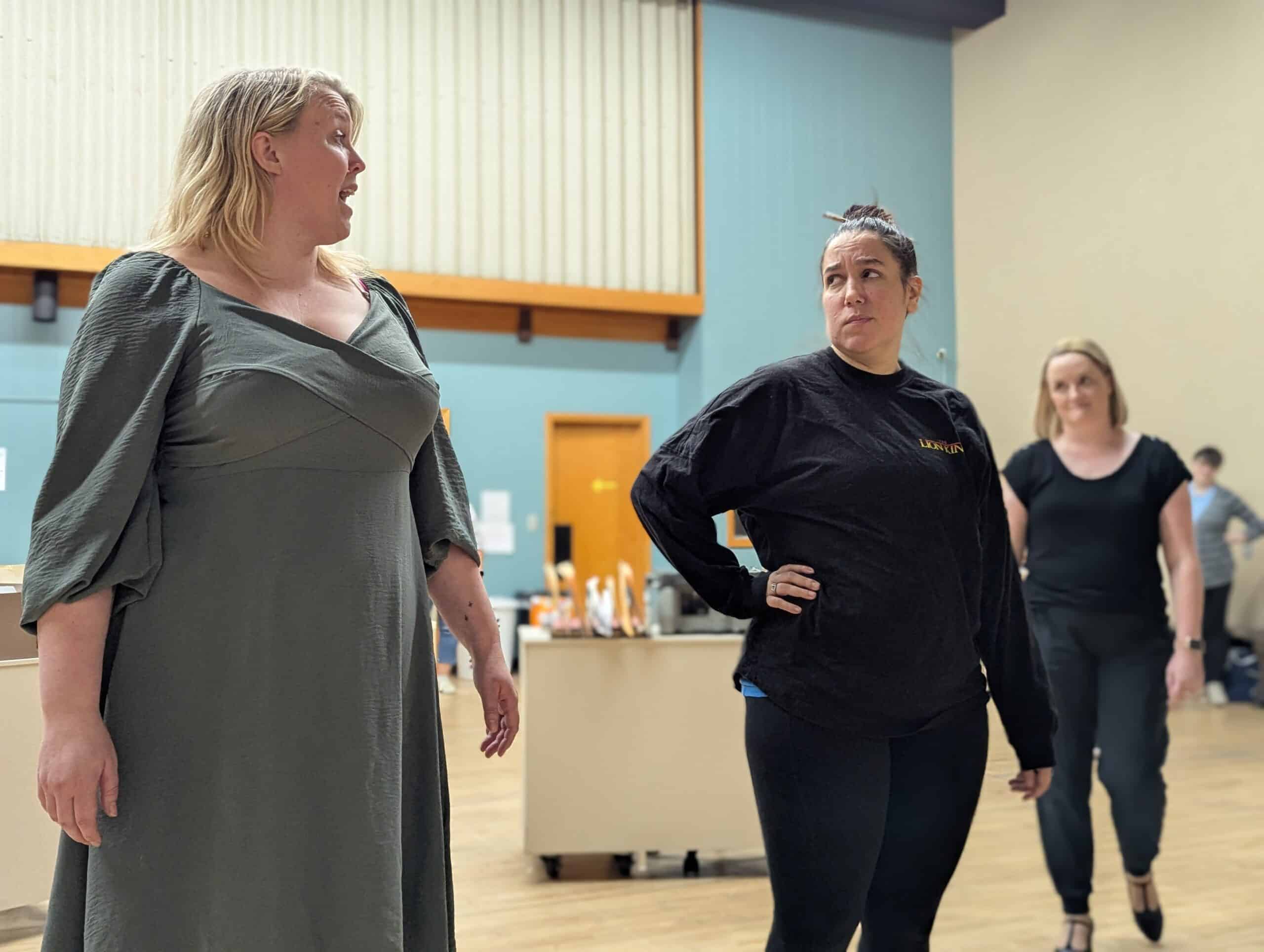In GREAT Theatre’s 9 to 5: The Musical, three women in the lead roles stand up to injustice, inequality, and a sexist boss, finding strength in friendship and solidarity along the way. Offstage, three ensemble cast members—Dr. Anne Sinko, Attorney Maria Warhol, and Dr. Julie Bell—have lived their own versions of that story in fields that have not always treated women as equals.
Equations and Equality
For Anne Sinko, math has always been about discovery, connection, and community. With multiple degrees in science and math (B.S in Biochemistry, a B.A. in Mathematics, a M.S. in Mathematics, a Ph.D. in Applied Mathematics), and another in data science on the way (a second M.S. in Data Science), she laughs, “Yes, I know it’s a lot of degrees, but I genuinely love school!” Her specialty, Graph Theory, explores relationships and connections between objects which is fitting for someone who values collaboration as much as calculation.
What has fascinated Anne most isn’t just the numbers or the theorems, but the culture that emerged around this once-marginalized branch of mathematics.
“In its infancy, Graph Theory was considered ‘recreational’ and not real mathematics. Ironically, that outsider status helped shape a more open and collaborative culture in the field. Mentorship became a norm early on, which has led to more women participating in Graph Theory than in many other areas of math. While mathematics overall remains male-dominated at the highest levels, my field has stayed relatively balanced and community-oriented, which is one of the reasons I love it.”
Even so, Anne is quick to stress that progress doesn’t mean complacency.
“Gender discrimination absolutely still exists, but in subtler forms than what we see in 9 to 5. One common bias is idea erasure: a woman raises an idea in a meeting, it’s ignored or dismissed, and later a man repeats it, and suddenly, it’s a great idea. Even when he credits her (which does happen!), the group often still associates the idea with him. Another subtle but persistent issue is the assumption that women will handle the ‘housekeeping’ tasks, like taking notes at meetings.”
Her voice strengthens when she describes more overt encounters: “A student once told me women shouldn’t be allowed to teach because they’ll never put students first and instead always put family first. A colleague once said I shouldn’t have a vote in institutional decisions because I brought my child to a meeting that was held after daycare hours, proving that I wasn’t truly committed to the institution.” She adds: “But what’s most damaging, I think, is the constant need to prove yourself. It’s easy to internalize that doubt and start wondering, ‘Am I overacting?’ or ‘Am I being too sensitive?’. That’s what makes this kind of bias so corrosive. It chips away at confidence from the inside out.”
That is why the story of 9 to 5 feels so familiar and powerful to her.
“Violet’s ‘little guy’ speech at the end resonates deeply with me, especially her comments about being late to work because of kids, and late picking up kids because of work, and all the judgement that follows. But the bigger theme for me is solidarity. Violet, Doralee, and Judy needed each other to challenge unfair systems. Their strength came from collaboration and mutual belief.”
Joining Anne onstage in the production are Maria Warhol and Dr. Julie Bell, each bringing their own lived realities to the story.
Law and Legitimacy
Maria’s path through law reveals how assumptions and invisibility can play out even when credentials are impeccable:
“When I became an attorney in 2016 at 26 years old, it was a struggle to find my place and to be taken seriously, particularly by some of the older male attorneys. I remember on more than one occasion, while wearing a suit, getting asked if I was a legal assistant or victim advocate. Legal assistants and victim advocates are very important and I couldn’t do my job without them, but after all the time and energy I put into becoming an attorney, it was frustrating to not be seen as such.”
Maria shared that while she’s faced those moments of dismissal, she’s also seen a cultural shift taking hold.
“In my workplace now, there are so many strong women. When I look around and see women in leadership positions—judges, prosecutors, defense attorneys—it’s empowering. We support each other. There’s a sense that we’ve all had to push through the same kinds of moments, and that creates a quiet solidarity.”
She adds that her experiences have shaped how she approaches her work today: “When I was younger, I tried to downplay being young and female to blend in. Now I lean into it. I bring empathy into my work. I bring my own voice. And I’ve realized that makes me a better attorney.”
Coaching Change, Healing Bias
Julie’s experience spans medicine and coaching—two worlds where gender expectations have long shaped who gets to lead.
“When I first started in the medical field, it was mostly men. In my first job, only two of the twelve doctors at the practice were women,” she recalls. “Now, years later, that’s completely flipped. In my current practice, we’re predominantly women physicians and advanced practice providers, with a smaller percentage of men. The tables have really turned.”
Still, she’s seen how social patterns persist even as the workforce changes. “When I see families bring in their kids, it’s still most often the mom. But I’m starting to see more dads bringing their kids in for checkups or sick visits. I’ll ask, ‘Where’s Mom today?’ and they’ll say, ‘She’s at work.’ There’s been progress, but when a child gets sick, it’s still usually the mom who leaves work to take care of them. That’s changing, but slowly.”
Beyond medicine, Julie found herself in another male-dominated space as the head coach of the boys’ soccer team in Little Falls for 20 years. “We’d have games at St. Cloud State, and I’d get off the bus with my gear, ready to go,” she says. “The person greeting us would say, ‘Just let me know when your coach gets here.’ And I’d say, ‘I am the coach.’ I wasn’t the team manager or statistician. I was the coach of a men’s team.” She smiles, remembering that at the time, she was the only woman in the state coaching a boys’ high-school soccer team. “During my twenty years, there was one other woman who did it, but otherwise, I was kind of alone in that respect.”
Julie connects her experiences directly to the musical’s themes:
“9 to 5 is about women finding their voices and bringing compassion and humanity into the workplace. Hearing about other people, helping and supporting them, and making things better—that’s what leads to a stronger environment. A dictatorship doesn’t make a better workplace.”
Real Progress, Real Work Ahead
Together, the three women reflect a powerful truth: individual career journeys intersect with broader cultural shifts. Anne points to concrete progress in mathematics: “I’m incredibly proud of how mathematics has confronted gender disparities. We’ve had open, sometimes uncomfortable conversations about what’s happening and why. Among the non-health STEM fields, biology has a majority of women, and mathematics is next at around 40% women. It’s not equal yet, but it’s real progress.” She adds: “The biggest challenge that I see is perception. When people picture a ‘mathematician’, the image is still overwhelmingly male-coded. Until that changes, the stereotypes will linger.”
Maria echoes the cautious optimism:
“I’ve seen more women in leadership roles now than when I started. But we still have work to do when it comes to respect and assumptions.”
Julie simply adds:
“The shift is happening … and that gives me hope.
As for what each hopes the audience takes from the show, and from their experiences, Anne says it clearly: “First, I hope audiences have fun. … But satire also shines a light (or maybe even a sun?) on truths we still need to face. Sexual harassment still happens. Prioritizing institutions over people still happens. But so does solidarity.” She goes on: “One of my leadership mantras is, ‘My job is people, not policy.’ If we center people first, we can ‘change it’ together.”
Anne offers this advice to the next generation:
“Build relationships. The people around you matter more than you might think. Find your Violet, Doralee, and Judy, whether they’re women or men, in your field or outside it. A strong, supportive network is essential for navigating bias, celebrating your wins, and reminding you that you belong.”
In 9 to 5, the on-stage resistance of three women becomes a celebration of unity, strength, and possibility. Offstage, Anne, Maria and Julie are living that story one step at a time, connection by connection.
GREAT Theatre’s production of 9 to 5 runs until Nov 2 at the Paramount Center for the Arts. More info here.
